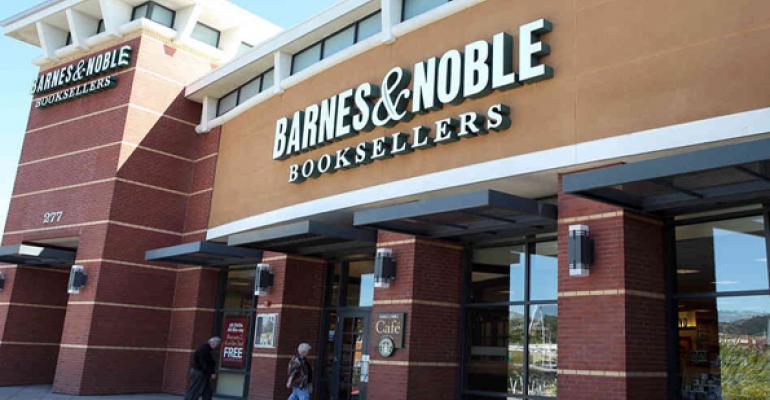Barnes & Noble’s disappointing holiday sales results left the retail industry with some sobering thoughts.

The last big-box book retailer standing reported that for the nine-week period ending Dec. 29, its same-store sales fell 8.2 percent. Same-store sales excluding sales of NOOK e-reader products fell 3.1 percent. Revenue for the company’s digital business, encompassing the NOOKs, digital content and accessories, decreased 12.6 percent year-over-year, to $311 million.
The overall drop in the bookseller’s same-store sales can be at least partially attributed to tough year-over-year comparisons with Barnes & Noble’s last holiday season, when the chain profited from the liquidation of its main rival Borders, according to Peter Wahlstrom, an analyst who covers the chain for Chicago-based research firm Morningstar. But the fall in the sales of NOOK products can’t be ignored, given that the tablet was created to allow Barnes & Noble to compete with digital rivals Apple and Amazon.com.
“We noticed that the company chose to even discount its newer devices in some cases, which was a bit concerning because Amazon and Apple were not discounting,” Wahlstrom says. “It was like Barnes & Noble was trying to buy market share and traffic into its stores and it didn’t work.”
The NOOK’s failure to take off as a formidable competitor to the iPad and the Kindle makes Barnes & Noble’s position in the bookselling business ever more precarious, according to both Wahlstrom and Gary Balter and Simeon Gutman, who cover Barnes & Noble for Credit Suisse. After all, Apple and Amazon don’t carry the expense of bricks-and-mortar divisions. Barnes & Noble has to pay rent for hundreds of superstores, in addition to employing knowledgeable salespeople on the ground, notes Steven J. Montgomery, president of b2b Solutions LLC, a Lake Forest, Ill.-based consulting firm.
“I think as long as anybody is selling physical books in a bricks-and-mortar environment, Barnes & Noble will survive,” Montgomery says. “The problem is those big stores require big sales in order to generate a reasonable return on investment and I am not sure whether or not that’s going to continue.”
Shrinking giant
The issue, according to Howard Davidowitz, chairman of Davidowitz & Associates Inc., a New York City-based retail consulting and investment banking firm, is that Barnes & Noble has been trying to survive in a business that has undergone fundamental changes since the chain emerged on the retail scene at the beginning of the 20th century. He likens the book sector to music retailers in the early 2000s, when the big music chains fell off the map one by one, destroyed by the emergence of iTunes and its peers.
It is all but a certainty that Barnes & Noble will have to start downsizing its store portfolio in the coming months, according to both Davidowitz and Jeff Green, president of Jeff Green Partners, a Phoenix-based retail real estate consulting firm. And while some of its peers in the big-box space, such as Office Depot, can experiment with smaller stores because their customers come in looking for specific products that can be ordered through the chains’ websites, a bookstore is too much about the experience of exploring new products in person for that to be a successful strategy for Barnes & Noble, notes Montgomery. That means the downsizing is likely to take the form of store closings, rather than shrinking footprints.
“The change [in the book industry] is enormous and Barnes & Noble is going to continue to shrink because it goes against the tide,” says Davidowitz. “It’s in a very tough place and its future is very uncertain.”
Barnes & Noble currently operates 689 stores in 50 states. The company leases most of its stores on a 10- to 15-year basis. In 2013, 123 of its leases were scheduled to expire, followed by 136 in 2014 and 101 in 2015.

